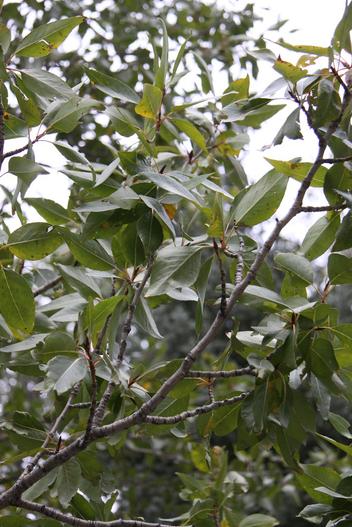Black Cottonwood
(Populus balsamifera subsp. trichocarpa)
Black Cottonwood (Populus balsamifera subsp. trichocarpa)
/
/

Andrey Zharkikh
CC BY 2.0
Image By:
Andrey Zharkikh
Recorded By:
Copyright:
CC BY 2.0
Copyright Notice:
Photo by: Andrey Zharkikh | License Type: CC BY 2.0 | License URL: https://creativecommons.org/licenses/by/2.0/ | Uploader: AndreyZharkikh | Publisher: Flickr


















Estimated Native Range
Summary
Populus balsamifera subsp. trichocarpa, commonly known as Black Cottonwood or Balsam Poplar, is a deciduous tree native to riparian zones, floodplains, and wetlands in the Western USA and Canada. This species thrives along rivers and streams, and in moist, well-drained soils, often forming pure stands in its native habitat. It is the largest poplar species in the Americas, reaching heights of 30 to 50 meters (98 to 164 ft) with a trunk diameter exceeding 2 meters (6+1⁄2 ft). Black Cottonwood is notable for its longevity, with some specimens living up to 400 years, although it is generally considered short-lived. The tree’s form is characterized by a straight, tall trunk and a broad, open crown. Its leaves are glossy green and release a pleasant balsamic scent in the spring, which can be detected from a considerable distance.
Black Cottonwood is valued for its rapid growth and the aromatic foliage that emerges in spring. It is often used for reforestation projects, erosion control, and as a windbreak due to its fast-growing nature. The tree’s ability to produce adventitious roots makes it useful for propagation, and branches can be placed in potted plants to encourage rooting. However, its invasive roots can cause damage to building foundations, especially on shrinkable clay soils. In cultivation, Black Cottonwood requires full sun exposure, ample water, and prefers soils with slow to medium drainage. It is less commonly used in urban settings due to its large size and potential for root problems.CC BY-SA 4.0
Black Cottonwood is valued for its rapid growth and the aromatic foliage that emerges in spring. It is often used for reforestation projects, erosion control, and as a windbreak due to its fast-growing nature. The tree’s ability to produce adventitious roots makes it useful for propagation, and branches can be placed in potted plants to encourage rooting. However, its invasive roots can cause damage to building foundations, especially on shrinkable clay soils. In cultivation, Black Cottonwood requires full sun exposure, ample water, and prefers soils with slow to medium drainage. It is less commonly used in urban settings due to its large size and potential for root problems.CC BY-SA 4.0
Plant Description
- Plant Type: Tree
- Height: 70-100 feet
- Width: 8-30 feet
- Growth Rate: Rapid
- Flower Color: N/A
- Flowering Season: Spring
- Leaf Retention: Deciduous
Growth Requirements
- Sun: Full Sun
- Water: High
- Drainage: Slow, Medium
Common Uses
Bee Garden, Bird Garden, Butterfly Garden, Erosion Control, Fragrant, Water Garden
Natural Habitat
Native to riparian zones, floodplains, and wetlands in the Western USA and Canada
Other Names
Common Names: Balsam Poplar
Scientific Names: , Populus balsamifera subsp. trichocarpa, Populus hastata, Populus trichocarpa var. hastata, Populus balsamifera var. hastata, Populus trichocarpa var. trichocarpa, Populus trichocarpa var. ingrata, Populus trichocarpa f. ingrata, Populus trichocarpa var. cupulata, Populus balsamifera subsp. californica
GBIF Accepted Name: Populus balsamifera subsp. trichocarpa (Torr. & A.Gray) Brayshaw